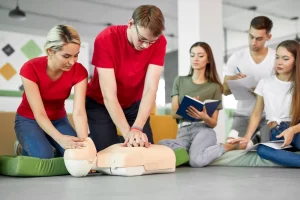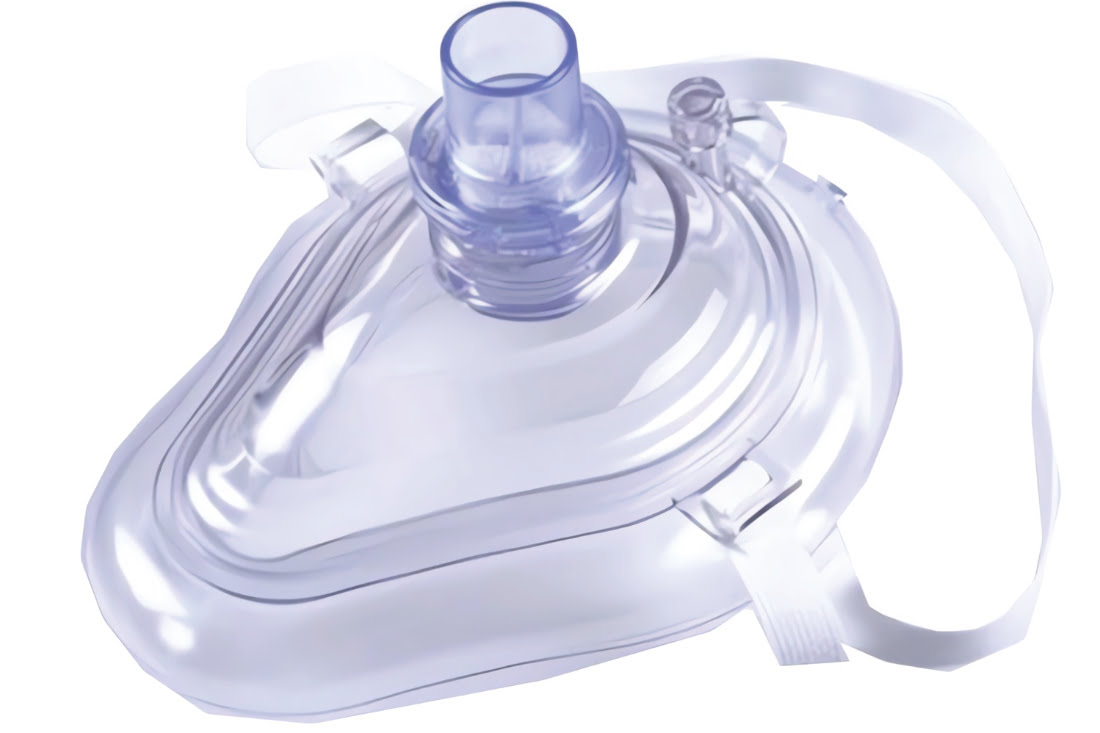


A CPR mask comprises an inflated tube that creates an airtight seal when you attempt to provide mouth-to-mouth resuscitation to someone experiencing a cardiac arrest. The one-way valve in the nozzle allows air to enter the victim’s body and prevents the victim’s body fluid from reaching you while you perform CPR.
On the other hand, a face shield is simply a plastic sheet consisting of a small valve that serves the same purpose as in a CPR mask. Let’s find out why using these pieces of equipment is essential when performing CPR:
Some people believe that CPR masks and face shields are a waste of space in a first-aid kit, thinking that mouth-to-mouth resuscitation doesn’t necessarily require a CPR mask or a face shield. But have you ever thought about the risks of direct mouth-to-mouth breath delivery?
Real-life CPR is more complicated than the scenarios depicted in movies. Patients may have blood on their face or mouth and can vomit at any time during the CPR process.
Other potential risks include transmission of infections from the casualty to the first-aider or vice versa. In the case of blood-to-blood contact, HIV can also be transmitted.
While the risks of diseases crossing over are extremely low, you can’t afford to take any chances.
Even if you keep infections aside, imagine drooling in blood or vomit if the patient abruptly throws up halfway during the mouth-to-mouth resuscitation process. Thus, it is always good to use a CPR mask and a face shield as a preventive measure.
However, in such a situation, you should never abandon a non-breathing casualty to get a CPR mask or face shield. If you have someone else with you, ask them to get these items for you. But if you’re alone, you should immediately begin with the compressions while calling emergency services for quick help.
You should perform CPR as soon as possible, as non-breathing casualties rarely survive without urgent CPR treatment. If you don’t have barrier devices, such as a CPR mask or a face shield, you should rely on compression-only CPR and keep performing it until the patient recovers or emergency services arrive.
In summary, you should use barrier devices such as CPR masks and face shields when performing CPR. However, if you don’t have access to them and no one can get them, you should rely on CPR compressions only. Go ahead and provide mouth-to-mouth resuscitation if the patient is known to you, for instance, in the case of your family member or a friend you know who is free from diseases.
All the information shared above assumes that you’ve taken a CPR class. No matter how valuable the information may seem, it cannot replace the practical CPR demonstration given in a CPR class. It will help you understand the use of different CPR equipment and train you on what to do when you don’t have any of the CPR tools. You should realize that CPR devices are helpful and have outstanding functions, but they are not essential for CPR.